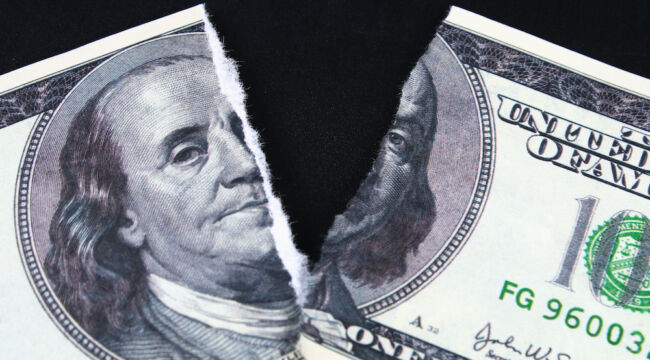by Jim Rickards, Daily Reckoning:

It’s often said that the Fed raises interest rates until something breaks. Well, something has broken.
The collapse of Silicon Valley Bank (SVB) has really thrown Jay Powell and the Fed for a loop.
Just last week, Powell issued some very hawkish testimony before Congress about the need to maintain an aggressive stance against inflation. Markets were even factoring in an 80% chance of a 0.50% rate hike at next week’s FOMC meeting.
TRUTH LIVES on at https://sgtreport.tv/
But what a difference a week can make.
Today, the market is giving zero chance of a 0.50% rate hike. Literally zero odds. The odds of a modest 0.25% rate hike are now 70%.
I agree with that prediction, incidentally. I believe the Fed will raise rates by 0.25%.
Let’s not forget that the Fed itself is partly responsible for the SVB collapse (aside from terrible risk management by the bank itself).
The Fed “Broke Something”
The Fed’s aggressive tightening since last March has put upward pressure on bond yields, which has driven down the value of the bonds themselves (remember, bond yields and bond prices move in opposite directions).
SVB held an exceptionally large amount of longer-duration government bonds, which are especially sensitive to interest rate increases. SVB’s balance sheet was taking great losses as the prices of the bonds in their portfolio were falling.
I’m not going to get too deep into the weeds about the specifics of SVB’s collapse, but falling bond prices resulting from higher yields played an underlying role. And that’s how the Fed factored into the collapse.
The Fed “broke something.”
SVB obviously isn’t the only bank holding these long-duration government bonds. So is the Fed going to continue to aggressively raise rates and risk more bank failures, even potentially another financial crisis? Not likely.
The Fed has to ensure that the banking system is sound, or at least as sound as it can be in today’s hugely distorted financial world.
That means backing off on its plans to tighten. That means the Fed is going to have to let inflation run. That means a weaker dollar.
I’ll be writing a lot more about SVB and the ripple effects in the weeks and months ahead. For now, let’s zero in on one particular asset class that always comes to the fore in times of financial stress — gold.
The Golden Constant
Gold and other commodities never go away. Whether it’s gold, silver, oil, natural gas, copper or agricultural goods, these goods will always be in demand and should always be on an investor’s list of possible alternatives to stocks, bonds and cash.
In the past, I have always recommended a large allocation to cash as a way to weather financial storms. I still do. But now we have to add a warning about being highly selective in your choice of banks.
Right now, commodities such as gold are overwhelmingly priced in dollars on world markets. This does not mean that every transaction is conducted in dollars, but commodities are priced in dollars.
If you’re paying in any other currency, you have an exchange rate issue; you’ll pay an amount in some other currency (the Canadian dollar, the Australian dollar, the euro or the British pound, etc.) that equals the dollar price based on current exchange rates.
Currently, there are important movements around the world to abandon the dollar as a medium of exchange. This has to do with the dollar’s role as a payment currency. There’s a difference between the roles of a payment currency and a reserve currency.
Read More @ DailyReckoning.com



